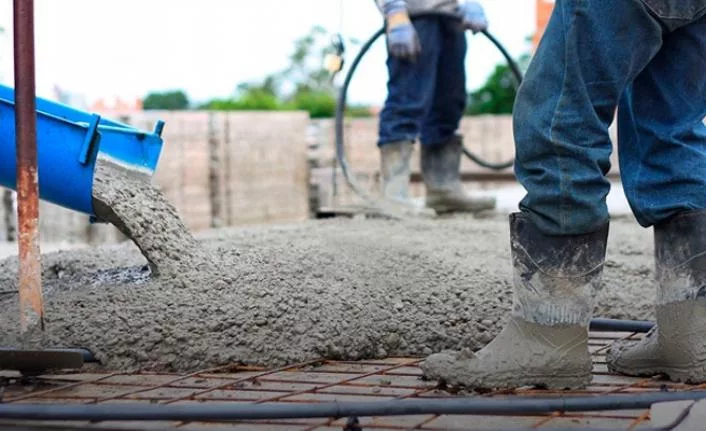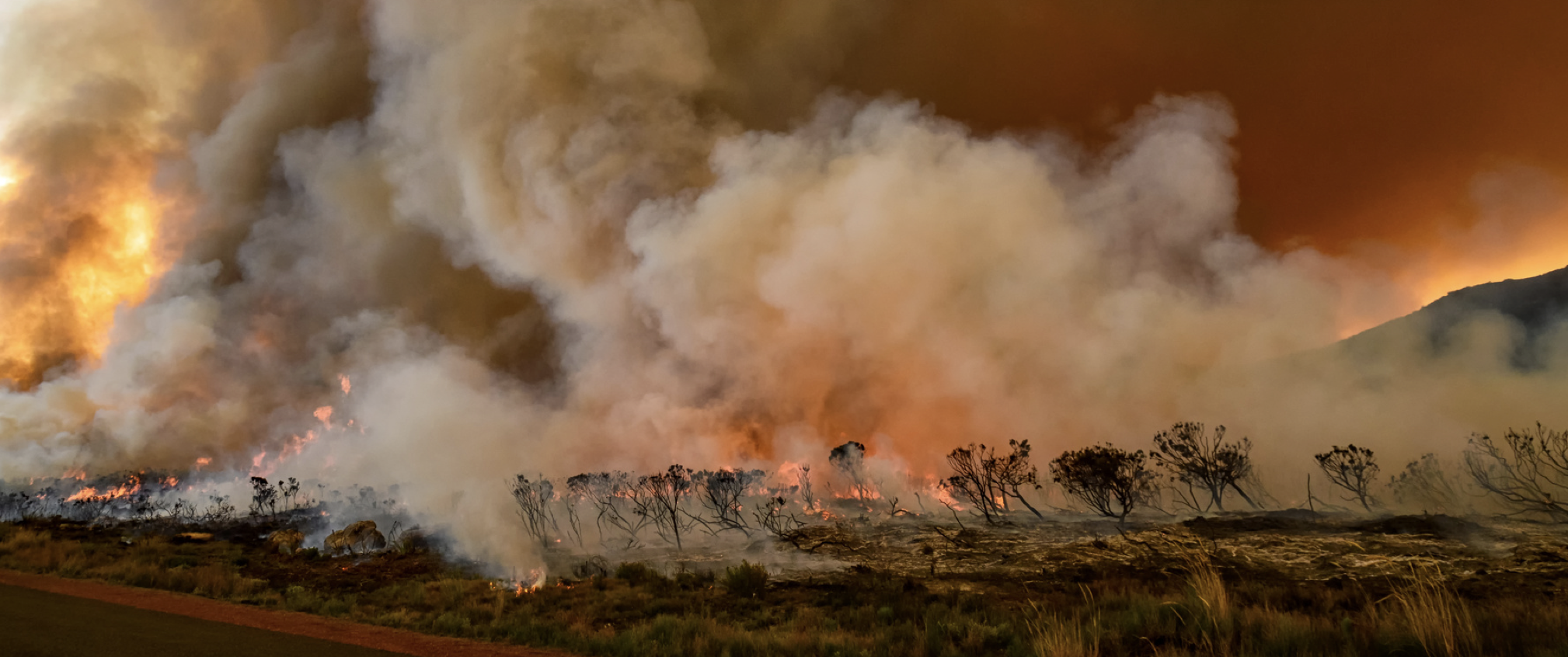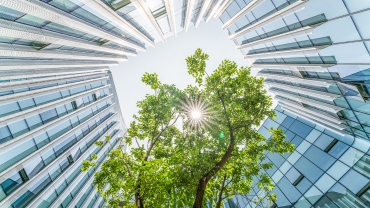
In the fight against climate change, the industrial sector is often seen as part of the problem, and for a good reason. Since the industrial revolution about 250 years ago, there has been a massive increase in greenhouse gas emissions. Iron-steel, cement, aluminum, fertilizer, and electricity sectors have the highest risk of carbon leakage. According to the Carbon Border Adjustment Mechanism (CBAM), these sectors are primarily involved in steps to reduce carbon emissions.
The “Fit for 55” package is the main tool to cut emissions by at least 55% by 2030 and fulfill climate neutrality in the EU by 2050. The CBAM initiative is part of the ‘Fit for 55 Package’. In the context of this package, CBAM is not a standalone measure. It is a climate policy measure aimed at preserving the integrity of the European Union’s climate ambition towards its ultimate goal of climate neutrality. CBAM’s role is to address the risk of carbon leakage and strengthen the EU ETS. Therefore, there is a strong relationship between the EU ETS and CBAM (European Commission, 2021).
FOOTNOTE 1: The “European Union Emissions Trading System” (EU-ETS), created in 2005, is the most extensive emissions trading system in the world designed to reduce the effects of greenhouse gases. EU ETS is a market-based mechanism based on a “cap and trade” principle. This means there is a limit on the total amount of specific GHG emissions the industry can emit. EU-ETS is implemented in the vast majority of European countries. In addition, Kazakhstan and New Zealand have introduced their own emissions trading system. Turkey, Russia, China, Ukraine, and Brazil are still in the planning stage of their own emissions trading system (Ertunga & Seyhun, 2022).
This mechanism aims to bring the competitiveness of high-emission products, which are generally produced at lower costs, to the same level as alternative products that can be made with relatively lower emissions but at higher prices (Climate News, 2021).
Critical elements of Carbon Border Adjustment Mechanism include:
- Applying a carbon price to imports of the targeted product selection to prevent carbon leakage
- Inclusion of transport emissions in the EU ETS
- Aircraft and ships access clean electricity at essential ports and airports.
- Maximum limit on the greenhouse gas content of the energy used by vessels calling at EU ports
- Recommends that taxation of energy products be aligned with EU energy and climate policies (EY, 2022).
Regulation responds to the risk of a “carbon leak,” where the carbon price creates costs; that is, it prevents production from shifting towards countries with no carbon costs. CBAM will create a level playing field for domestic and foreign producers in sectors covered by the EU ETS and create the conditions for an efficient carbon market. Suppose the mechanism is not implemented over time. In that case, production will shift to geographies that do not impose carbon taxes. Emissions will seep into these countries, delaying progress toward a planet that produces net zero emissions (Climate News, 2021).
While CBAM aims to prevent the risk of carbon leakage, this regulation will also encourage producers’ use of more greenhouse gas emission-efficient technologies in other countries, thereby producing fewer emissions per unit output (European Commission, 2021).
FOOTNOTE 2: There was a total of 34.8 billion tons of carbon emissions in the world in 2020. China is the leading country in carbon emissions, with a share of 31 percent. The USA ranks second in carbon emissions, with a share of 14%. On the other hand, Turkiye has a share of 1.1 percent in world carbon emissions, with 392.8 million tons (Ertunga & Seyhun, 2022).
Under the proposal, CBAM will be implemented during the transition period from 2023 to 2025. During this period, a quarterly reporting system will be applied to importers of covered goods to facilitate smooth program implementation, data collection, and dialogue with non-existing countries. From the beginning of 2026, it will be implemented realistically, and free allowances under the EU ETS will be phased out for sectors covered by CBAM (C2ES, 2022).
Russia is the largest supplier of CBAM products to the EU27, followed by Turkiye, the UK, and China. Among the top 12 exporters to the EU, the EU appears to be the most critical market for the UK, Serbia, and Mozambique. About 80% of CBAM exports go to the EU. In reality, however, the EU, with an export share of over 10%, is essential to all CBAM-related sectors in the EU’s main trading partners (Dumitru, Kölbl, & Wijffelaars, 2021).
The EU has a share of 41.3% in Turkiye’s exports, with 93 billion dollars in 2021, and ranks first in its total exports. In 2021, the EU’s share in Turkiye’s exports was 61.5% in the aluminum sector, 36.7% in the Iron and Steel sector, 69.3% in the electricity sector, 27.9% in the fertilizer sector, and 14.7% in the cement sector (PWC, 2022).
The first step in preparation for border carbon regulation is the immediate implementation of an EU-compatible Emissions Trading System in Turkiye. In this way, it will be possible to ensure that carbon costs remain within the country and are evaluated for environmental and climate investments.
Iron&Steel

Steel is an essential input of various sub-ecosystems such as construction, automotive, and engineering; thus, it is closely related to the sectors where it is used as a raw material. In addition to taking steps to develop low-carbon production solutions, Carbon emissions can also be reduced by using methods such as electrification, hydrogen use, and carbon capture and use (CCUs). In addition, using steel scrap in production and recycling methods (such as reuse and remanufacturing) reduces CO₂ emissions by 58%, air pollution by 86%, water use by 40%, and water pollution by 76% (Istanbul Chamber of Industry, 2021).
According to 2020 data, China takes first place in iron and steel production worldwide, followed by India and Japan. On the other hand, Turkey became the largest producer in Europe with a show of 35.8 million tons and became the 7th producer in the world, increasing its production volume by 6%. South Korea, which is among the countries that export the most steel, is the country that produces steel with the lowest carbon intensity today (Istanbul Chamber of Industry, 2021).
Aluminum
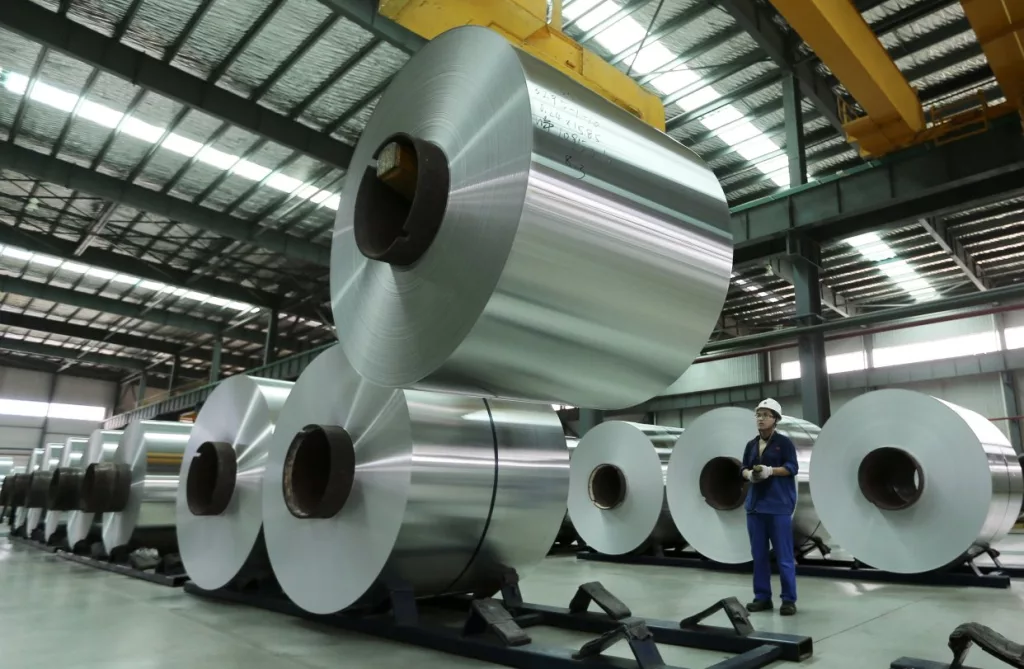
Aluminum makes automobiles, building materials, industrial machinery, electrical products, beverage cans, foil packaging, and more. Aluminum making is a carbon-intensive business and industry, accounting for almost 3% of global emissions, and is also material at the center of emissions reduction plans. For example, aluminum is one of the materials preferred by electric vehicle pioneers because of its lightness and durability, which means extra mileage and enhanced safety. At the same time, it will be one of the metals critical for the green revolution due to its use in renewable energy sources, especially solar panels (World Energy Council Turkey, 2020).
The three largest aluminum exporters, China, India, and Australia, also have the highest emission intensity for producing the energy required for aluminum production. In this respect, they will be at a disadvantage. Among the largest aluminum producers are China, Canada, India, and Russia; Russia and Canada. Due to the significant share of hydroelectric power plants in electricity production, they have a competitive advantage as they produce aluminum with lower carbon emissions (Climate News, 2021).
Cement
The cement industry, which has a vital role in the development of housing and infrastructure, has an important position in the economy with the level of employment it provides, as well as being effective for the Gross Domestic Product (GDP). However, the cement industry is very energy intensive. The cement industry produced approximately 2.8 billion tons of CO2 in 2015, equivalent to 8% of the global total. If the cement industry were a country, it would be the third largest emitter after China and the USA (Carbon Brief, 2018).
Considering the cement exporters, China and Mexico, which produce high emissions in this sector, seem disadvantaged. Within the EU, France, Switzerland, Germany, and Italy will stand out by creating cement with low emissions. Cement producers in Turkey will be partners in the competition; The Turkish Cement Industrialists’ Association has adopted the zero emission target in 2050 and announced that it is preparing a Carbon Roadmap (Climate News, 2021).
Electricity
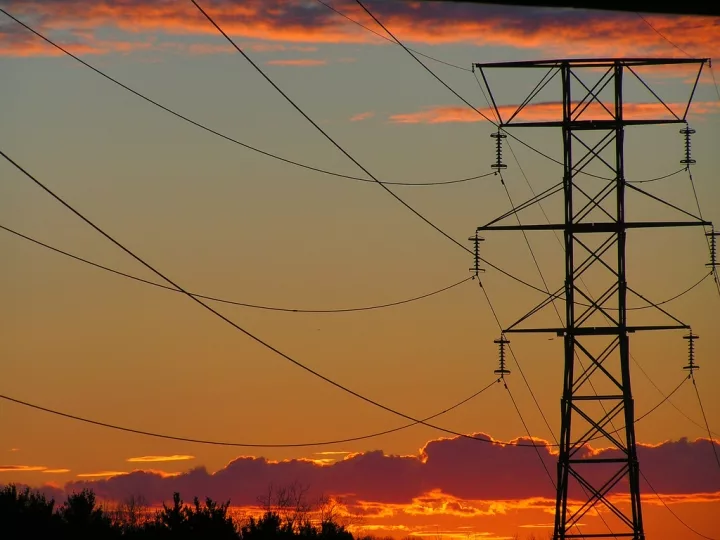
Energy-related greenhouse gas emissions account for most anthropogenic emissions – about 80% in the USA and the European Union. Just 20% of final energy consumption is electricity, but electricity generation is responsible for over 40% of all energy-related emissions. Worldwide carbon dioxide (CO2) emissions from burning fossil fuels total about 34 billion tonnes (Gt) per year. About 45% is from coal, about 35% from oil, and about 20% from gas (World Nuclear Association, 2022).
Electricity imports are included in the scope of this Regulation, as it is responsible for 30 percent of total greenhouse gas emissions. The strengthened Union climate target will increase the gap in carbon costs between electricity generation within and outside the Union. This increase, combined with progress in connecting the Union’s electricity grid to that of its neighbors, will increase the risk of carbon leakage due to increased imports of electricity, much of which is generated by coal-fired power plants. In line with the approaches to tangible products, a reference value for emissions embedded in imported electricity must be established to determine the relevant CBAM obligation. Two alternative options are used to determine the reference value for embedded emissions for electricity: (a) the average GHG emission intensity of the EU electricity mix and (b) the average GHG emission factor of the EU electricity mix (European Commission, 2021).
Fertilizers
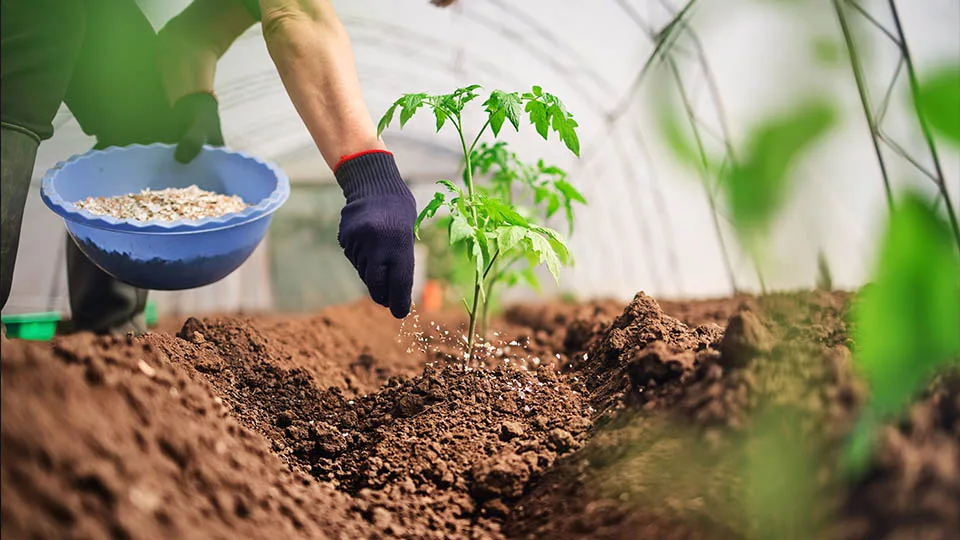
Fertilizer is added to soils to provide the nutrients crops need to grow and to increase soil fertility. One of the essential nutrients that plants need for growth is nitrogen. But plants cannot take nitrogen from the air as they can absorb carbon dioxide or oxygen. Today, ammonia is the second most produced chemical in the world, used in large quantities as a highly effective fertilizer. This invention revolutionized farming by doubling the number of people an acre of land could feed. But ammonia must be made at high temperatures and high pressure, meaning it takes much energy to produce. According to the 2019 climate change and special land report of the Intergovernmental Panel on Climate Change (IPCC), the amount of fertilizer used annually has increased nearly ten times since 1960. The production of ammonia fertilizers today is responsible for around 1% of all global energy use and 1.4% of CO2 emissions – almost equivalent to Germany’s emissions (Carbon Brief, 2022).
Worldwide, agriculture is the second largest source of climate change pollution. Fertilizers produce greenhouse gases after farmers apply them to their fields. Crops get, on average, about half of the nitrogen they get from fertilizers. Most of the applied fertilizer flows into waterways or is broken down by microbes in the soil, releasing the potent greenhouse gas nitrous oxide (N₂O) into the atmosphere. The International Fertilizer Association estimates that the fertilizer industry represents 2.5% of global greenhouse gas emissions, including 1.5% of fertilizer use (Carbon Brief, 2022).
FOOTNOTE 3: Although nitrous oxide accounts for only a tiny fraction of worldwide greenhouse gas emissions, nitrous oxide warms the planet 300 times more than carbon dioxide (Climate Portal, 2021).
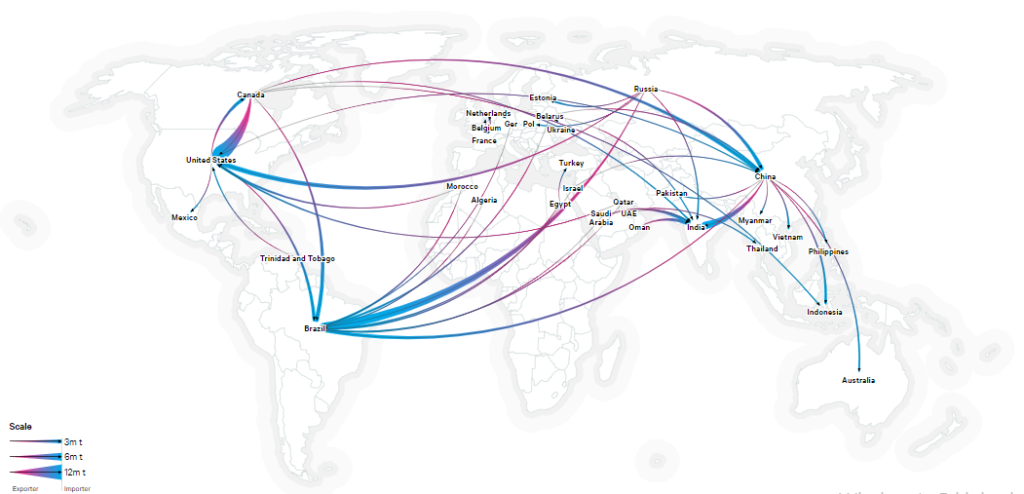
In recent years, the EU fertilizer industry has invested heavily in production processes and achieved a greenhouse gas emission reduction of almost 50%. These ongoing investments ensure that EU mineral fertilizer producers have the industry’s lowest carbon footprint worldwide. Under the proper framework and conditions, the fertilizer industry can again be at the forefront of decarbonization and contribute to a climate-neutral economy by producing low-carbon and green ammonia (Fertilizers Europe, 2022).
Conclusion
The Carbon Border Adjustment Mechanism is a vital incentive tool to maximize the synergy between decarbonization and the zero pollution goal. Sectors need to make renewable energy investments, accelerate energy efficiency studies, and turn to activities that decarbonize the entire value chain. Those who cannot keep up with this transformation will lose in every sense. Although it is stated that WTO obligations prepare the measures, many countries such as Brazil, South Africa, India, and China are concerned about unfair discrimination.
Although they may seem like two very different issues, climate change and air pollution are closely linked, and air pollution and climate change have many familiar sources. Interventions to reduce them simultaneously can be cost-effective, optimize outcomes, and produce better results than addressing them separately.
References
Dumitru, A., Kölbl, B., & Wijffelaars, M. (2021). The Carbon Border Adjustment Mechanism Explained.
Ertunga, E. İ., & Seyhun, Ö. K. (2022). Border Carbon Regulatory Mechanism and Turkey’s. Aegean Journal of Strategic Studies, 13(1), s. 1-13.
European Commission. (2021). Proposal for a Regulation of The European Parliament and of The Council Establishing A Carbon Border Adjustment Mechanism.
Istanbul Chamber of Industry. (2021). Base Metals and Industry. Istanbul Chamber of Industry Sustainability Vision.
C2ES, (2022).
Carbon Brief, (2018).
Carbon Brief, (2022).
Climate News, (2021).
Climate Portal, (2021).
EY, (2022).
Fertilizers Europe, (2022).
PWC, (2022).
World Energy Council Turkey, (2020).
World Nuclear Association, (2022).



